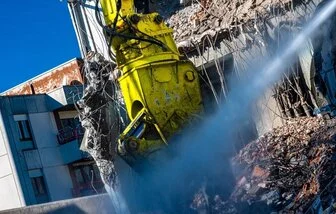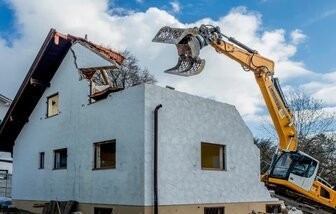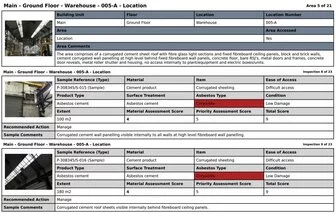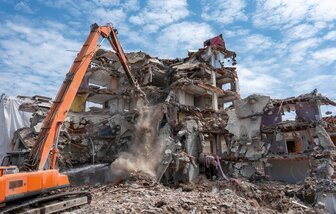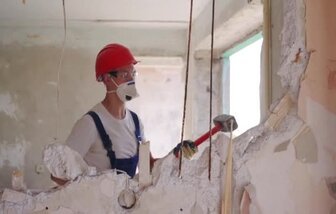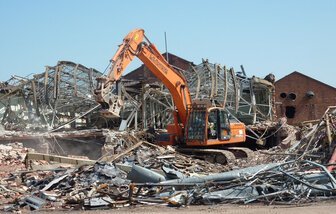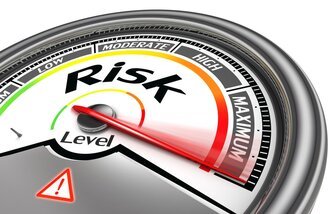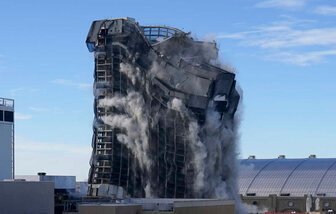Demolition Hazards and How to Manage Hazards in Demolition Sites
Demolition risk and hazards overview
Learn about the common hazards in demolition sites and how to manage them effectively.
This blog post discusses structural instability, falling debris, hazardous materials, noise and vibration, and dust and airborne particles as common hazards.
It provides key measures for managing hazards, including site assessment and planning, training and education, personal protective equipment (PPE), engineering controls, regular inspections and monitoring, and communication and emergency procedures.
Prioritise safety in the demolition process to prevent accidents and protect workers and the surrounding environment.
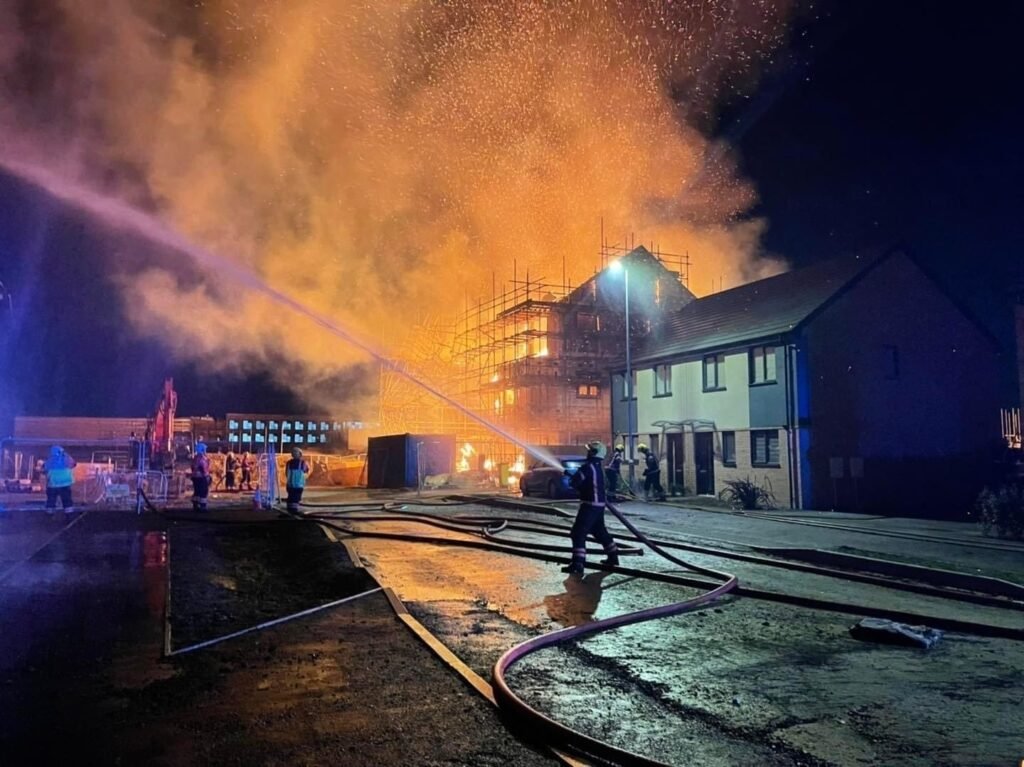
Demolition is a complex process that involves the dismantling or destruction of structures, whether it be buildings, bridges, or other infrastructures. While demolition is necessary for various reasons such as renovation, redevelopment, or safety concerns, it also presents several hazards that need to be managed to ensure the safety of workers and the surrounding environment.
Demolition sites pose a range of hazards that can cause injuries or even fatalities if not properly managed. Some of the most common hazards include:
1. Structural Instability
During the demolition process, structures may become unstable, increasing the risk of collapse. This can be due to weakened supports, improper demolition techniques, or unexpected structural weaknesses. Workers must be cautious and follow proper procedures to prevent accidents.
2. Falling Debris
Demolition work often involves the use of heavy machinery and tools, which can dislodge debris and cause it to fall from heights. This can pose a significant risk to workers on the ground. Implementing safety measures such as protective barriers, hard hats, and safety nets can help mitigate this hazard.
3. Hazardous Materials
Many older structures contain hazardous materials such as asbestos, lead, or mold. When disturbed during the demolition process, these materials can become airborne and pose serious health risks to workers and nearby residents. Proper identification, handling, and removal of hazardous materials are essential to prevent exposure.
4. Noise and Vibration
Demolition activities generate high levels of noise and vibrations, which can impact the health and safety of workers and nearby communities. Excessive noise can lead to hearing damage, while vibrations can cause structural damage to neighboring buildings. Implementing noise and vibration control measures, such as sound barriers and monitoring systems, can help mitigate these risks.
5. Dust and Airborne Particles
Demolition work generates a significant amount of dust and airborne particles, which can lead to respiratory issues, eye irritation, and other health problems. Proper ventilation, dust suppression techniques, and personal protective equipment (PPE) such as masks and goggles are crucial in minimizing exposure to these hazards.
It is essential to implement effective hazard management strategies to ensure the safety of workers and the surrounding environment in demolition sites. Here are some key measures that can help manage hazards:
1. Site Assessment and Planning
Prior to any demolition work, a thorough site assessment should be conducted to identify potential hazards. This includes assessing the structural integrity of the building, identifying hazardous materials, and evaluating the surrounding environment. A detailed demolition plan should then be developed, considering the specific hazards present and the appropriate control measures.
2. Training and Education
Proper training and education are crucial for all workers involved in the demolition process. They should be trained on hazard identification, safe work practices, proper use of equipment, and emergency procedures. Regular refresher training sessions should be conducted to keep workers updated on the latest safety protocols.
3. Personal Protective Equipment (PPE)
Providing appropriate personal protective equipment (PPE) is essential to protect workers from various hazards. This may include hard hats, safety goggles, respirators, gloves, and protective clothing. Regular inspections and maintenance of PPE should be carried out to ensure their effectiveness.
4. Engineering Controls
Implementing engineering controls is crucial in minimizing hazards. This may involve the use of protective barriers, safety nets, and scaffolding to prevent falls and falling debris. Additionally, using dust suppression systems, ventilation equipment, and noise control measures can help reduce exposure to airborne particles, dust, and excessive noise.
5. Regular Inspections and Monitoring
Regular inspections of the demolition site should be conducted to identify any potential hazards or deviations from the safety plan. This includes monitoring the structural stability of the building, air quality, noise levels, and the proper handling of hazardous materials. Any issues or concerns should be addressed promptly to prevent accidents.
6. Communication and Emergency Procedures
Clear communication channels should be established among workers, supervisors, and relevant stakeholders to ensure effective coordination and prompt response to emergencies. Emergency procedures, including evacuation plans and first aid protocols, should be in place and regularly practiced.
Demolition sites present various hazards that need to be managed effectively to ensure the safety of workers and the surrounding environment. By conducting thorough site assessments, providing proper training and education, implementing engineering controls, and maintaining regular inspections, the risks associated with demolition can be minimized. Prioritizing safety in every aspect of the demolition process is crucial to prevent accidents and protect the well-being of all involved.
What is demolition?
The process involves Rotational hydraulic shears and rock-beakers attached to specialist excavators are also used to cut or break through wood, cut steel and crush concrete which reduces the structure to a rubble
What is a premature collapse?
TPremature collapse of these structures is one of the main causes of serious injuries resulting from demolition activities. The most common type of incidents is the lack of planning before commencement
Demolition hazards
If a demolition project is well planned the risks of injury and death can be minimised. It should be emphasised that the planning and execution of a demolition project should only be done by appropriately competent persons.
What is a section 80 demolition notice?
If your considering demolishing an existing building you will need to submit a demolition, Section 80 Notice together with your (RAMS) to your local authority according to section 80
What is a pre-demolition survey
When a building is to be demolished the (non-domestic) client (usually the property owner) has a duty to provide pre-demolition information to the designer and contractor. This will involve a pre-demolition investigation and survey.
How to manage asbestos in demolition
One of the key issues arising in demolition these days is asbestos. Widely used in construction projects by previous generations, asbestos is now accepted as the UK’s largest occupational killer and there are strict guidelines for the safe removal
How to manage your demolition project
Where any redundant building, structure plant has contaminated flammable materials, precautions must be observed to avoid fires and explosions. Specialist advice must be required to identify any residual
What is manual demolition?
Among the methods, manual demolition is found to be most applicable for most sites, especially for areas located in the urban zone. The safety of the demolition process would greatly depend on the type of procedure used.
What is non explosive demolition?
You do not need explosives for every demolition job. Most people assume that for a demolition to be a demolition there is a need for a kaboom. It does not have to be that way
Structural demolition
Structural demolition is not a walk in the park. Total Group is well placed to deliver a safe, environmentally friendly and a budget wise project. We focus on a process that will assist you to salvage and recycle material for reuse.
What is high risk demolition?
The building contractor needs to make a thorough risk assessment to look for both risks and hazards. Control measures are then implemented to prevent any accident that could be fatal.
Controlled demolition methods
If you have a large building that requires demolishing, you cannot rely solely on manual demolition to get the project completed. There is only so much that a team of demolition contractors.
Ready to start your project ?
Let's Work Together
Please complete the form below and someone from the Total team will be in touch.

